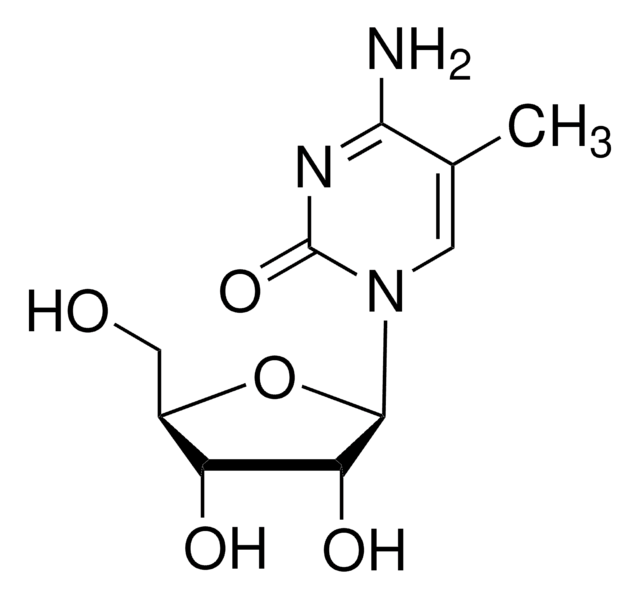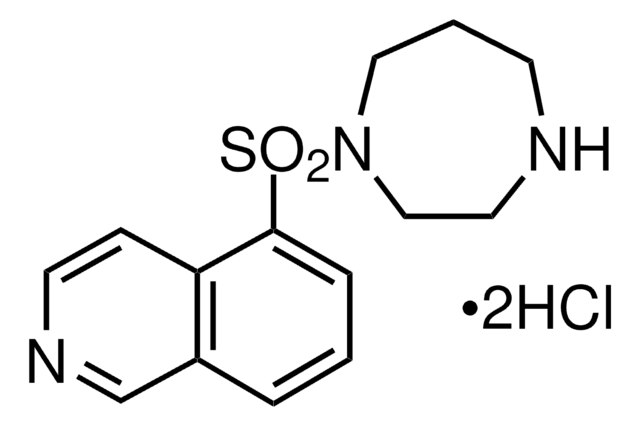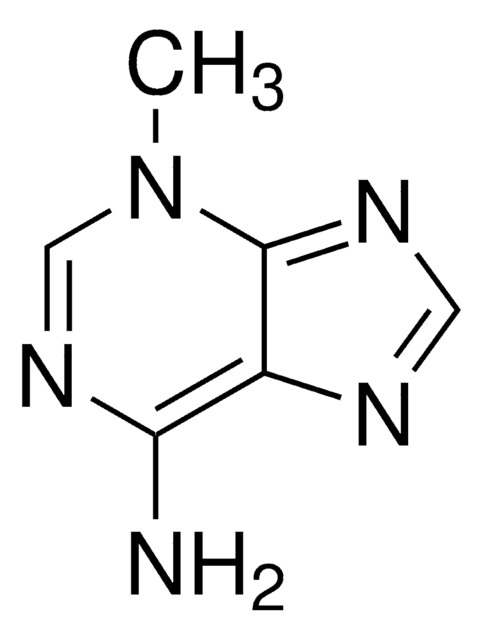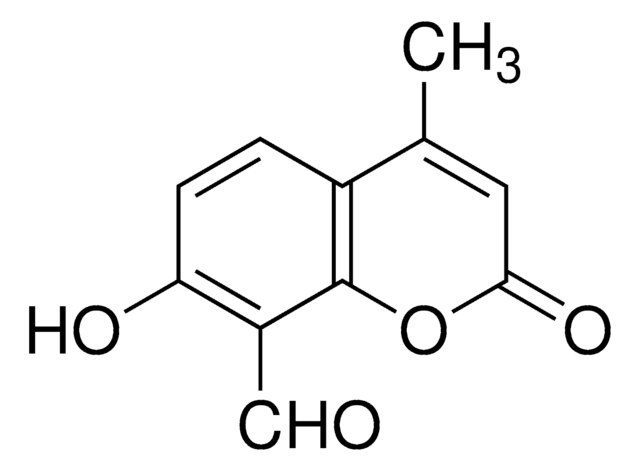Descrição geral
IRE1α Kinase-inhibiting RNase attenuator (KIRA6) is a cell-permeable, bioavailable, non-toxic, imidazopyrazinyl-naphthalenyl-phenylurea based compound that acts as a potent, ATP-competitive, reversible, and selective inhibitor of IRE1α kinase (IC50 = 600 nM). Exhibits good selectivity over ERK2, JNK2, JNK3, PIM1, PAK4, and PKA (IC50 >10 µM). Stabilizes the kinase domain of IRE1α in an inactive conformation and blocks its oligomerization and thereby reduces RNase domain activity. Shown to block brefeldin A-(Cat. Nos. 203729 & 500583) induced ER stress and apoptosis in INS-1 cells and tunicamycin (Cat. Nos. 654380 & 504570)-induced apoptosis in β-cells derived from C57BL/6 mice. Affords significant cytoprotection in combination with STF-083010 (Cat. No. 412510, 1 µM) and KIRA6 (50 nM). Systemic administration of KIRA6 in the Akita diabetic mice is shown to reduce their blood glucose levels, improve glucose tolerance, and conserve their β-cell function. Preserves photoreceptor function in a transgenic rat model (P23H) of chronic ER stress-induced retinal degeneration, when administered intravitreally. Displays desirable pharmacokinetic properties with t1/2 = 3.9 h and moderate clearance rate of 22.4 ml/min/kg in BABL/c mice (10 mg/kg, i.p.).
Aplicação
KIRA6 has been used to treat endothelial cells to study its effects on P53 and BiP expression.
Ações bioquímicas/fisiológicas
KIRA6 acts as an IRE1α-selective type II kinase inhibitor (IC50 = 0.6 µM; IC50 >10 µM against Erk2, JNK2, JNK3, Pak4, Pim1, PKA) by targeting ATP-binding site in its inactive conformation. Stabilizing IRE1α kinase domain in an inactive conformation by KIRA6 prevents IRE1α oligomerization and subsequent RNase domain activity induction, resulting in effective inhibition against stress-induced cellular IRE1α oligomerization (5 mM DTT for 6 h +/1 µM KIRA6) & phosphorylation (1 h 10 µM; KIRA6 pretretament prior to 1 µM Tg/586005 & 586006 for 2 h), XBP1 mRNA splicing (IC50 = 2 µM; 1 h KIRA6 pretreatment prior to 0.5 µg/mL Tm/654380 & 504570 for 8 h), Ins1 mRNA degradation (IC50 = 0.5 µM; 1 hKIRA6 pretretament prior to 0.5 µg/mL Tm for 12 h), and apoptosis (% annexin V + cells = 22% vs. 60% post 72 h 0.25 µg/mL BFA/203729 & 500583 treatment with or without 0.5 µM KIRA6; No BFA control = 16%) in rat insulinoma INS-1 cultures without significant cytotoxicity (up to 10 µM for 72 h). Blockage of stress-induced apoptosis is similarly observed in primary human & murine islets cultures (0.5 µg/mL Tm for 16 h +/ 0.5 µM KIRA6) with a concomitant recovery of glucose-stimulated insulin secretion. KIRA6 is bioavailable via intraperitoneal injection in mice (Plasma Cmax/t1/2/AUC0-24 h = 3.3 µM/3.90 h/14.3 µM·h; 10 mg/kg BALB/c i.p.) in vivo with no apparent animal toxicity and is efficacious (5 or 10 mg/kg/12 h for 33 to 37 days) in reducing high blood glucose level due to chronic ER stress-induced β cell loss among Ins2+/Akita mice expressing proinsulin C96Y mutant with oxidative folding defect. Likewise, KIRA6 co-administration is shown to significantly reduce Rhodopsin mRNA degradation 96 h post Tm intraveal injection (2 µL per eye, final vitreal [Tm] & [KIRA6] = 20 µg/µL & 10 µM, respectively) in a rat model of acute photoreceptor loss in vivo, despite a rapid vitreal clearance (t1/2<60 h). Synergistic cytoprotection is demonstrated when combined with STF-083010 (Cat. No. 412510) that covalently modifies IRE1 RNase domain Lys907 in Tm-treated INS-1 cultures.
Primary Target: IRE1α kinase
Características e benefícios
- Reversible: yes
- Cell permeable: yes
Embalagem
Packaged under inert gas
Advertência
Toxicity: Standard Handling (A)
Reconstituição
Use only fresh DMSO for reconstitution.
Outras notas
Please note that the molecular weight for this compound is batch-specific due to variable water content.
Informações legais
CALBIOCHEM is a registered trademark of Merck KGaA, Darmstadt, Germany









